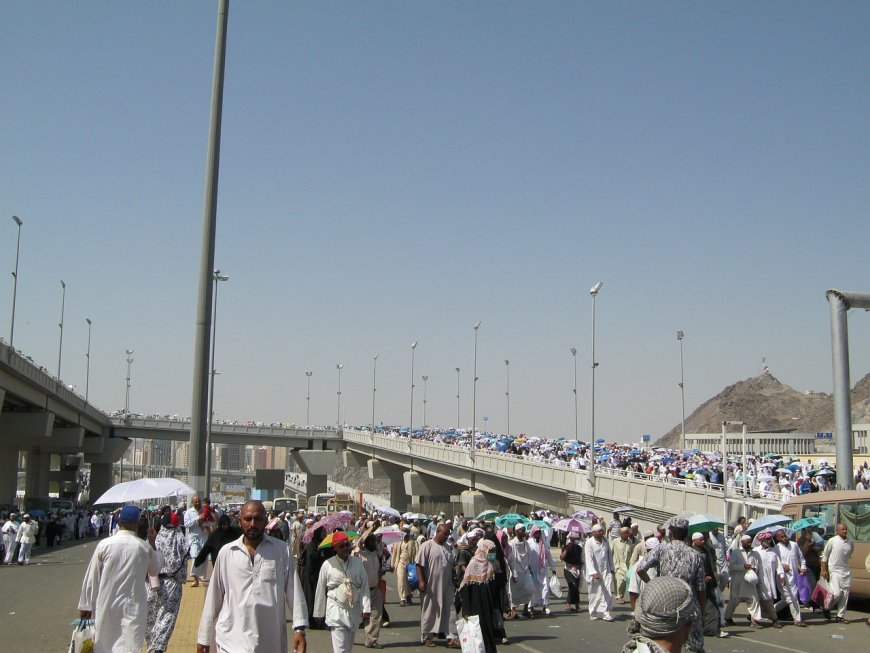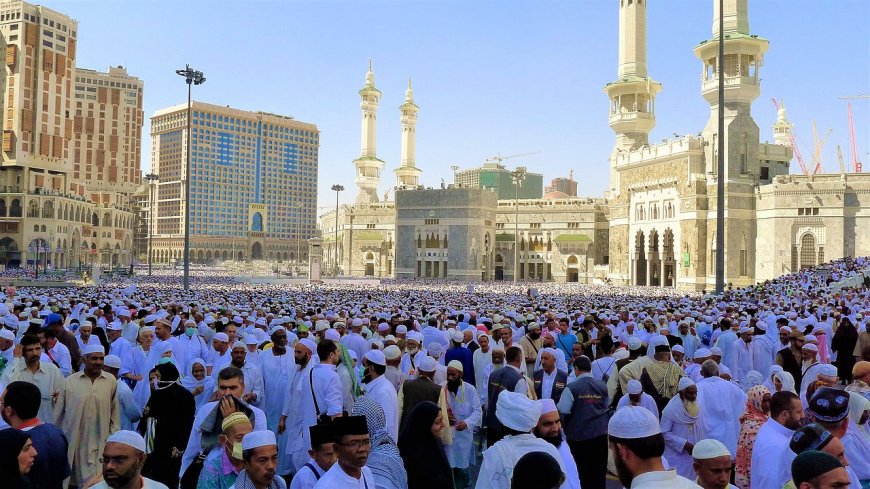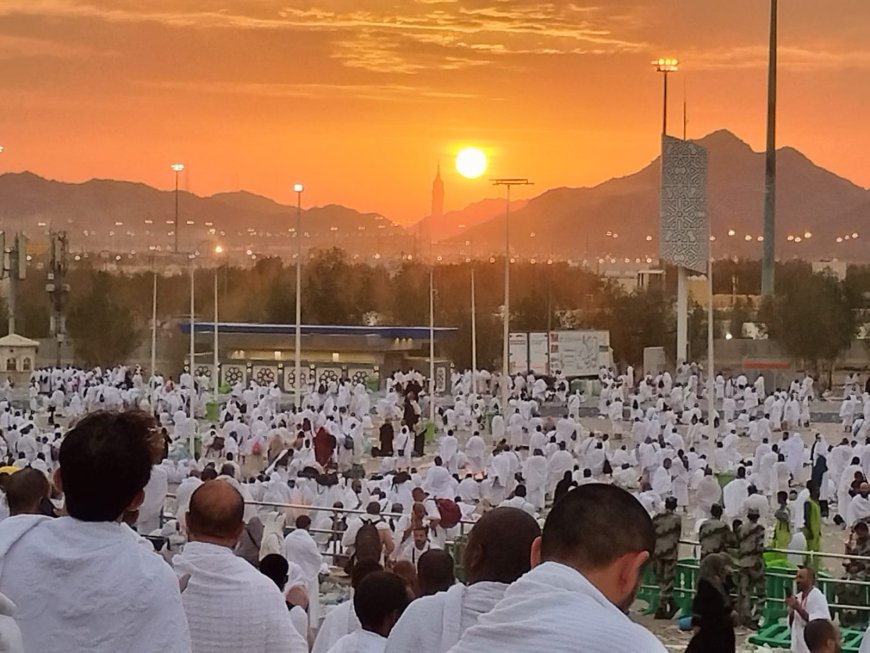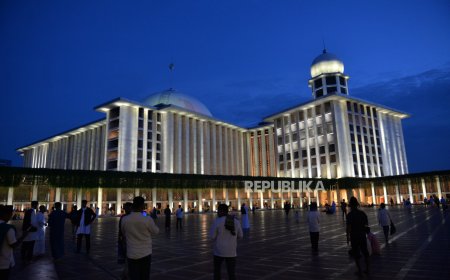Heat attack killed thousand of hajj plilgrims
AFP reports more than a thousand worshippers died as a result of the extreme weather.

MOSAIC-INDONESIA, JAKARTA -- The hot weather was again felt by more than 1.8 million pilgrims at the peak of the recent hajj on 9-13 Dzulhijjah 1445 H. AFP reported that more than a thousand pilgrims died as a result of the extreme heat. “The temperature is very harsh and people cannot withstand such heat,” said Wilayet Mustafa, a pilgrim from Pakistan.
A witness said the remains were lying on a roadside near Mina, an area where worshippers stay to stone jumrah. Their remains were covered in white Ihram cloths -- simple clothes worshippers wear -- until medical vehicles arrived. Climate scientists say what happened provides a glimpse into the impact of hot temperatures on the Arabian peninsula, where worshippers will perform Hajj in the coming decades.

“Hajj worship has been done in a certain way for more than 1,000 years, and the climate has always been hot,” said Carl-Friedrich Schleussner, scientific adviser at the German Institute for Climate Analysis. “But... the climate crisis is exacerbating climate conditions”.
During the Hajj, worshippers perform religious rituals as the Prophet Muhammad taught his followers 14 centuries ago. The timing of the Hajj is determined by the lunar year which retreats 10 days each year. Although Hajj is already well into winter, the 2040's will coincide with the peak of summer in Saudi Arabia. “It's going to be very fatal,” said Fahad Saeed, climate scientist at Pakistan-based Climate Analytics.
Deaths from hot weather during Hajj worship are not new. Deaths of worshippers have been recorded since 1400. Lack of acclimatization to higher temperatures, high physical activity, open spaces, and the elderly age of pilgrims make them vulnerable in the wilderness.
Last year, more than 2,000 people suffered heat stress, according to Saudi officials. The situation will get worse as the earth warms up, scientists say.

Saeed and Schleussner published research in 2021, in the journal Environmental Research Letters that found that if world temperatures warmed by 1.5 C (2.7 F) above pre-industrial levels, the risk of heat attack for pilgrims would be five times greater. World temperatures are expected to reach 1.5 degrees Celsius by the 2030s.
On the other hand, Hajj worship for Muslims is a valuable momentum to complete the five pillars of Islam. “The community is very motivated by religion. For some of them, it's a once-in-a-lifetime event,” Saeed said, as each country receives a limited number of slots. “If they get a chance, they will.”
In 2016, Saudi Arabia published a warming strategy that included the construction of shady areas, the establishment of drinking water points every 500 meters, and increasing the capacity of health services. Saudi health authorities are warning worshippers to keep their body temperature and avoid being outdoors between 11 a.m. and 3 p.m. during this Hajj season.
Pakistani worshipper Mustafa said he had to push his 75-year-old mother in a wheelchair. While trying to rest, they asked police to keep moving, he said.“I was surprised to see there was no attempt made by the Saudi government to provide any shelter or water,” Mustafa said. Saudi Arabia's state media office did not immediately respond to a request for comment from Reuters.
Egyptian medical sources told Reuters that the highest number of deaths occurred among pilgrims who were not officially registered with the hajj authorities and were forced to remain on the street due to heat exposure. Egyptian worshipper Sameh Al-Zayni said she received water from Saudi authorities. An eyewitness told Reuters he Saudi police handed out water and sprayed the crowd to calm them down.
Spraying water is only effective at temperatures below about 35 C (95 F), scientists say. If the temperature is too high, spraying water will not help and can add risk in humid conditions when people have difficulty removing heat through sweat.
WHO Predictions
The World Health Organization (WHO) has calculated that heat kills at least half a million people each year. The WHO warned that the real figure could be up to 30 times higher. Scientists explain how extreme heat damages the body and outdoor physical activity increases that risk.
-Effect to the body
Under normal conditions, the body regulates its own temperature like a thermostat. He will keep it steady at temperatures of around 36.8C (98.2F). As the heat outside increases, the body cools itself by increasing blood flow to blood vessels near the skin. This releases heat to the surface, while sweat cools the outside of the body.
“To ensure the proper functioning of cells, enzymes and vital organs, body temperature must remain constant, whatever the external conditions,” says Pieter Vancamp, neurobiologist at the French research institute INRAE.
During activities such as hajj, in which worshippers spend hours outdoors in the sun, Vancamp said, the body can quickly become exhausted and can no longer find the water reserves needed to sweat.
Meanwhile, the kidneys, heart, and brain are at risk of overheating and stopping working. When the thermostat experiences an overwhelmed body, symptoms will appear: fatigue, headache, fever,and sleep disturbance.
This can signal more serious effects, such as dehydration, which impedes the supply of water to vital organs. The biggest risk is heatstroke, when body temperature exceeds 40C (104F).
“The body has its limits,” Vancamp said. “When the weather is too hot or when extreme heat is combined with physical activity, for example, the body is not able to regulate itself.”
Those at risk
Infants, the elderly, people with health problems, and outdoor workers are the groups most at risk for the disease. The number of sweat glands in the body decreases with age, so the body's ability to cool itself decreases.
Graph describing the most common health effects or symptoms caused by extreme heat. “Several factors determine our reaction to heat: age, body mass, physical activity, genes,” Vancamp said.
“But when the heat is too intense, even a young, healthy body will lack the energy to keep temperatures close to 37C.” The WHO warns that hot nights pose certain health risks. The heat of the night leaves the body without a chance to cool down, thereby causing an increase in heart attacks.
What about the future?
Worldwide, people are on average exposed to life-threatening temperatures for 86 days in 2022, according to last year's Lancet Countdown report. The number of people aged over 65 who died from hot weather increased by 85 percent between the period 1991-2000 and 2013-2022, the leading medical journal added.
Climate change caused by humans burning fossil fuels is increasing heat waves and other extreme weather events. Currently, world temperatures are expected to reach 2.7 degrees Celsius above the pre-industrial average by the end of the century, according to the Climate Action Tracker.
The Lancet Countdown projects that in a 2C warming scenario, around five times as many people will die as a result of heat each year by 2050.







